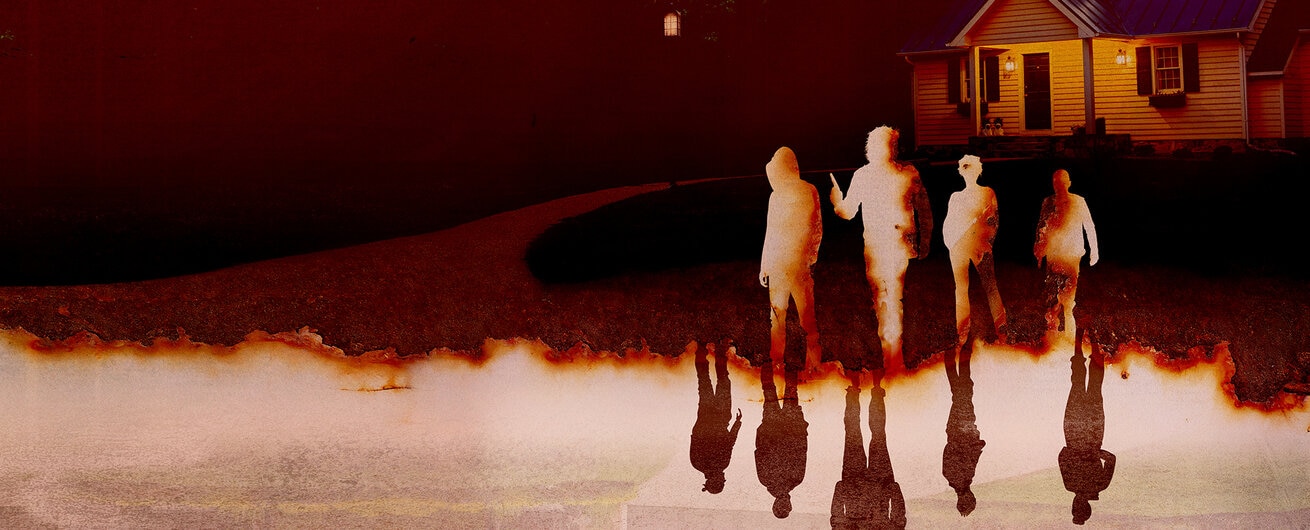Create a free profile to get unlimited access to exclusive videos, breaking news, sweepstakes, and more!
The Hatfields and McCoys: What Caused the Bloody Family Feud
Fighting over land, timber rights, and even a pig fueled the enduring deadly rivalry.

Everything’s relative when it comes to family fights. In extreme cases, they can literally be murder.
Fatal Family Feuds, premiering Saturday, Dec. 2 at 9/8c on Oxygen, offers a deep dive into this unsettling and tragic phenomenon. The show illuminates what happens when the closest relationships in people’s lives take deadly turns.
Tragic is an apt description of the notorious war between the Hatfields and the McCoys, two American families whose names together are shorthand for fatal family feuds.
Their mutual hatred for each other spilled blood across the hills of southern West Virginia and Kentucky. Keep reading to retrace the roots of Hatfield and McCoy case.
RELATED: See the Trailer for Fatal Family Feuds, Oxygen's New True Crime Series
Where the Hatfields and McCoys Lived
Described as “the most infamous feud in American folklore” in an ABC News report, the bitter and bloody long-running rivalry raged between two southern clans from the 1860s to 1890s in Central Appalachia.
The Hatfields of West Virginia were led by William Anderson “Devil Anse” Hatfield, while the McCoys of Kentucky were headed by Randolph McCoy.
The fighting unfolded mostly in the Tug Valley, a cross-border region of the states. While there’s no consensus on exactly what sparked the rift between families, according to cbsnews.com, there are theories about several factors that fueled the bloody feud.
Those reasons are linked to a sticky web of personal disputes, economic tensions, political divides, as well as a prized pig. The remote area, out of easy reach of law enforcement, is a key reason the conflict endured for nearly three decades.
The Hatfields and McCoys in the Civil War Era
During the Civil War, political alliances split the two families and fanned the flames of rancor raging between them.
During the fighting, the Hatfields sided with the Confederates, while the McCoys fought on the Union side, cbsnews.com reported. Divided loyalties led to rancor.
The first death in the feud was recorded in 1875, nine years after the official end of the war. Harmon McCoy, who had been discharged from the Union army because of a broken leg, was killed, according to the CBS report.
The Hatfields and McCoys battled over land rights
In the late 19th century, “as the nation’s economy sped up … an area that had long been overlooked became significantly more appealing,” according to Time.com.
The Hatfields and the McCoys both were determined to preserve their property that was rich in timber resources in the Tug Fork region. Tensions between the families and investors buying up tracts of land each clan claimed to own compelled the clans “turn against one another,” Time noted.
Around 1878, Devil Anse Hatfield won a court-adjudicated land dispute with a cousin of the McCoys. Hatfield walked away with a valuable 5,000-acre plot of land, according to herald-dispatch.com.
Randall McCoy was left destitute as a result, according to uconntoday.com. McCoy “was known to be very bitter about what happened.” Bad blood boiled.
RELATED: Texas University Student's Sinister Plot Leads to Family's Deadly 2003 Shooting
The Hatfields and McCoys raged over a razorback pig
In the 1870s, Randolph McCoy claimed that Floyd Hatfield had a razorback pig in his possession that “bore the McCoy markings on its ear,” according to herald-dispatch.com. The hog hassle ended up in court, where members of both the Hatfield and McCoy families sat on the jury.
Testimony was heard from Bill Staton, a McCoy family member who’d married a Hatfield. Staton sided with Hatfield, who won the case. Staton was later killed by a McCoy, per the Herald-Dispatch account.
Around 1880, the Hatfield-McCoy rancor was ratcheted up by a brief love affair between children of the two families’ patriarchs — Johnson “Johnse” Hatfield and Rose Anna McCoy. The relationship was opposed by the McCoys.
The Hatfield and McCoys sign a truce
According to a 1908 report in The New York Times, the Hatfield and McCoy feud had claimed 60 victims. The feud ended in 1891. Decades later, the participants shook hands in 1976.
Saturday, June 14, 2003, marked the official end to the Hatfields and McCoys' feud when the families signed a truce, cbsnews.com reported.
Fascination with the infamous feud hasn’t faded. In a 2007 study, doctors and geneticists studied numerous McCoy descendants and noted an unusually high rate of Von Hippel-Lindau disease, a rare, inherited condition associated with increased “fight or flight” stress hormones.
It’s theorized that the disorder may have contributed to the feud by boosting aggression.
Discover more about deadly personal disputes when Fatal Family Feuds premieres Saturday, Dec. 2 at 9/8c on Oxygen.






























